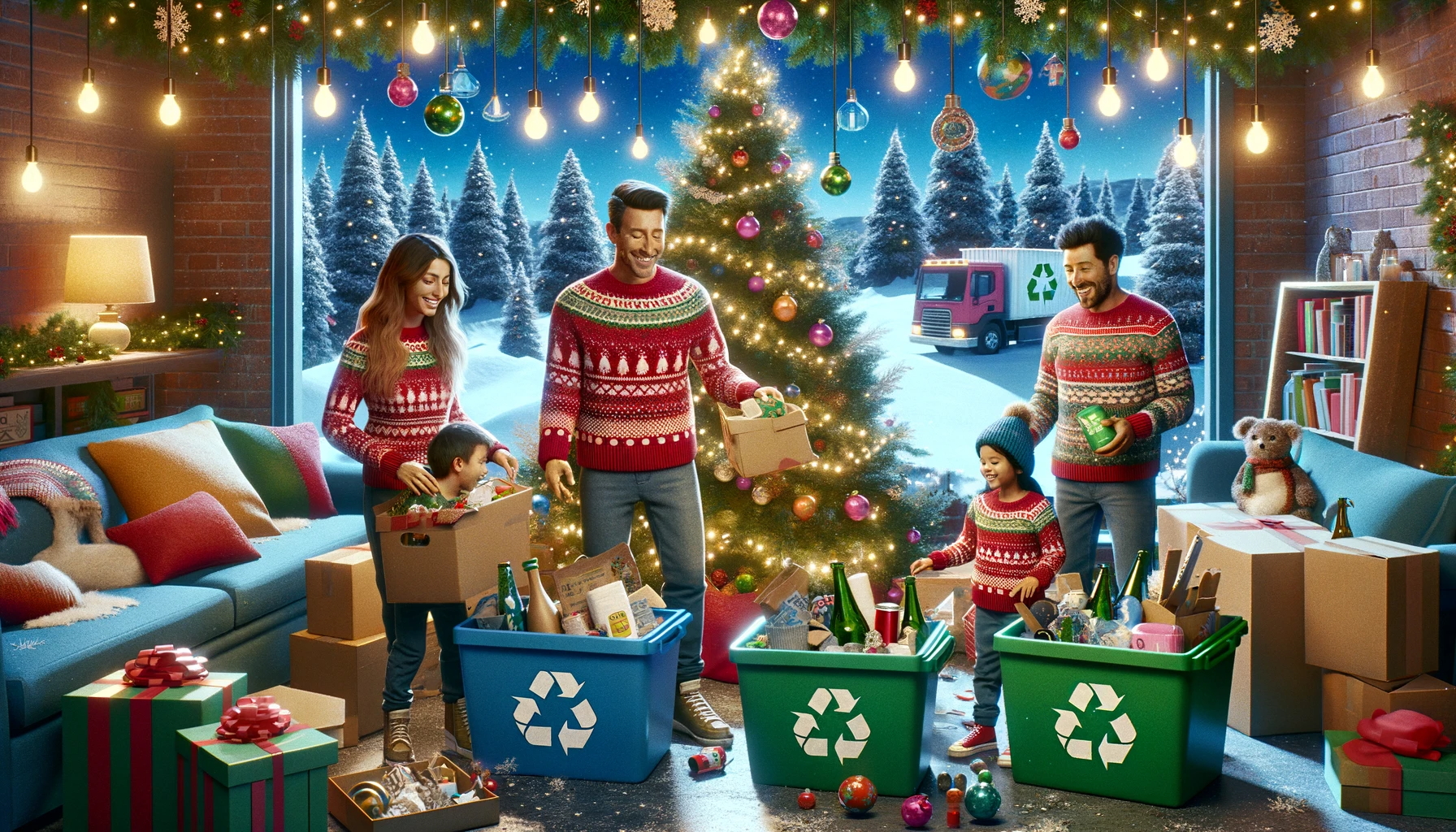
Christmas Trees Galore: Each year, millions of Christmas trees are sold worldwide. The good news is that real Christmas trees are recyclable. Many cities and towns offer special tree recycling services after the holidays, turning these trees into mulch or wood chips.
Wrapping Paper Wonderland: In the United States alone, an estimated 4.6 million lbs of wrapping paper is produced annually, much of which is used during Christmas. A significant portion of this paper is recyclable, but it’s important to remove any ribbons, glitter, or non-paper decorations first.
Card Collection: Around 1 billion Christmas cards are sold in the U.S. each Christmas season. If stacked up, these cards could stretch around the world five times! Many of these cards are recyclable, helping to reduce paper waste.
Lighting the Way: Holiday lights are recyclable too. Specialized recycling programs exist that dismantle old or broken holiday lights, recovering valuable materials like copper and plastic.
Boxing Day, Literally: The day after Christmas sees a significant increase in cardboard waste due to online shopping deliveries. Fortunately, cardboard is one of the easiest materials to recycle and can be turned into new cardboard products.
Toy Story: Post-Christmas, there’s often an influx of toy recycling as children outgrow or lose interest in their old toys. Some charities and organizations accept gently used toys for reuse, while others can recycle components of broken toys.
Bottle Bonanza: The festive season sees a spike in glass bottle usage, thanks to celebratory beverages. Glass is 100% recyclable and can be endlessly recycled without loss of quality.
Festive Fashion: Ugly Christmas sweaters are a holiday staple, but what happens when the season ends? Textile recycling programs can turn old garments into insulation material, carpet padding, or even new fabrics.
Gadget Gifting Leads to E-Waste: With electronics being popular gifts, post-Christmas e-waste increases. Recycling electronics is crucial as they contain valuable and sometimes hazardous materials.
Aluminum Foil and Trays: While cooking holiday meals, lots of aluminum foil and trays are used. Aluminum is highly recyclable and can be back on shelves as new products in as little as 60 days.
These facts not only highlight the importance of recycling during Christmas but also demonstrate the wide range of materials that can be given a new life through recycling, contributing to a more sustainable holiday season.
